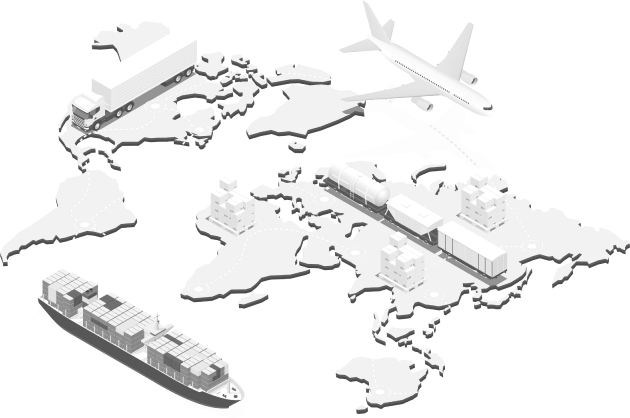As we begin 2023, the ocean freight market – which carries more than 90 percent of world trade by volume – appears to be cooling off a bit after two years of rising rates and overstretched capacity. More recently, some ships have been idled, and now even more capacity is on the way. Many new container ships ordered in 2021-2022 will hit the water in 2023 and 2024.
“More ocean freight capacity has the potential to translate into bit lower pricing, a positive development for our shipping clients as we evaluate the best, most affordable way to transport their goods,” says Yulieth Onofre, group sales manager, Prime Logistics, based in Miami. She also adds that customers forced to shift transporting their goods from ocean freight to more costly air freight over the past two years may now reconsider that strategy.
“That’s particularly true as port congestion eases and schedule reliability improves,” she emphasizes. “If those trends continue, some customers may gain an increased confidence level for using sea freight services.”
Some 11 billion tons of goods are transported by ocean-freight company ships annually, according to the International Chamber of Shipping. That represents an incredible 1.5 tons per person based on the world’s current population.
What is ocean freight?
Handling the loads are five major types of freight ships including bulk carriers, general cargo ships, container ships, tankers, and barges. They carry raw materials, machinery, chemicals, equipment, grains, factory parts, both packaged and frozen foods, and many types of finished goods. In addition, specially designed cargo ships each transport between 4,000 and 8,000 automobiles or other vehicles to global ports.
Among the largest international cargo ports are Shanghai and Hong Kong; Rotterdam, the Netherlands; and Busan, South Korea; while Los Angeles is the largest cargo port in the U.S. For the full list of the world’s top 50 cargo ports, check out this compilation by the World Shipping Council. https://www.worldshipping.org/top-50-ports
Among other top U.S. cargo ports are Long Beach and Oakland, Calif.; Seattle and Tacoma, Wash.; Savannah and Brunswick, Ga.; Norfolk, Va.; the Port of New York and New Jersey; Houston; and Miami.
Long Journeys, Busy Waterways
Goods transported by water from point A to point B often travel great distances and pass through the busiest ocean freight waterways. For example, the English Channel connects the North Sea with the Atlantic Ocean and serves as a major gateway to Europe, while the Strait of Malacca, nestled between peninsular Malaysia and the island of Sumatra, Indonesia, is the shortest route between the Pacific and Indian oceans.
“Of course, much trade also flows from Atlantic to Pacific via the Panama Canal, which in a 2016 expansion gained an additional set of deeper, wider locks to accommodate larger, mega container vessels,” notes Onofre. In addition, the Suez Canal connects Europe with Asia, while the Strait of Hormuz connects the Gulf of Oman with the Persian Gulf; ships traversing that strait transport up to 30 percent of the world’s total oil shipments.
Other top waterway routes include the Bosphorus Strait, gateway to Istanbul, and the Black Sea; the St. Lawrence Seaway between the U.S. and Canada; and the Danish Straits connecting Europe’s Baltic Sea and North Sea.
Looking Ahead
As 2023 gets under way, there’s no crystal ball that can precisely predict what’s ahead for the ocean freight sector. Yet, as Onofre notes, overcapacity and dropping rates in this sector may benefit Prime Logistics’ clients who need to ship goods.
But analysts also cite other factors that could come into play this year: cost-of-living changes, labor actions, port congestion, geopolitical uncertainties, continuing supply chain issues, and consumers’ “return to a normal spend” for travel, hospitality, entertainment, and dining out (thus impacting their ability to purchase other goods). Companies who’ve ordered new container ships could also scrap or offload older tonnage, thus reducing capacity in an effort to shore up ocean-freight pricing.
All that said, “one factor is absolutely certain,” says Onofre. “Prime Logistics is committed to serving our customers and evaluating the best logistical, shipping and handling options for their goods – whether that’s transport on the world’s oceans or as air freight or truck cargo. So, take advantage of our expertise and give us a call to discuss your needs.”
About Prime Logistics Group
One of four divisions of Prime Group, an international logistics services conglomerate founded in Ecuador in 2001, Prime Logistics Group serves to streamline, optimize, and expedite freight to and from the U.S. for a wide range of major industries.
With offices in Quito, Miami, New York, Los Angeles, Bogota, and Amsterdam, Prime Logistics capitalizes on its long-time relationships with the major air carriers and ocean lines to offer competitive rates in securing ample space to destinations all around the world.
For information, call 305-592-2044 or visit www.PrimeLogisticsGroup.com.



